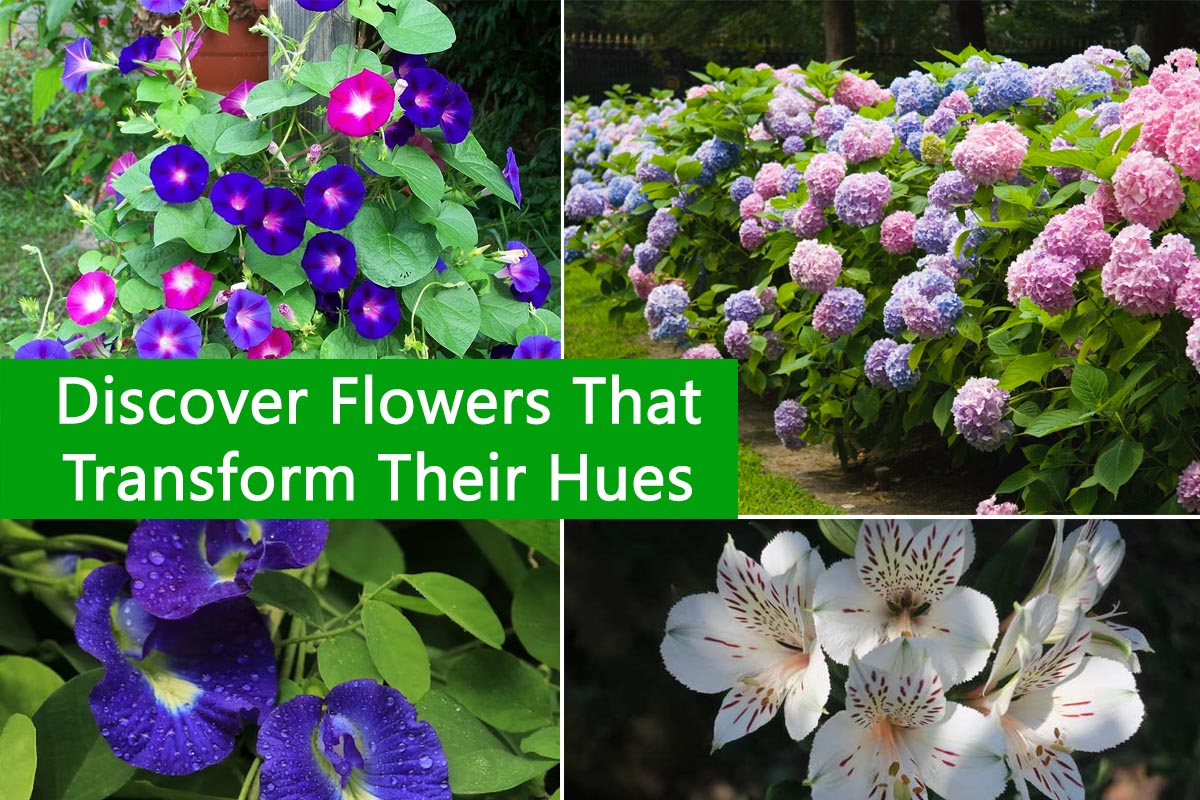
Discover Flowers That Transform Their Hues
Nature is full of surprises, and one of the most enchanting aspects of the natural world is how it can change right before our eyes. Flowers, in particular, can be incredibly dynamic in appearance, and some varieties undergo stunning transformations in colour. In this blog, we’ll take a closer look at these remarkable blooms and the magic of nature within them.
Flowers That Transform Their Hues
- Morning Glory (Ipomoea tricolour)
- Hydrangea (Hydrangea macrophylla)
- Butterfly Pea (Clitoria ternatea)
- Lily of the Incas (Alstroemeria)
- Chrysanthemum (Chrysanthemum morifolium)
- Rose (Rosa spp.)
- Dahlia (Dahlia spp.)
- Viola ‘Etain’ (Viola cornuta ‘Etain’)
- Hibiscus ‘Mood Ring’ (Hibiscus rosa-sinensis ‘Mood Ring’)
- Dianthus ‘Rainbow Loveliness’ (Dianthus barbatus ‘Rainbow Loveliness’)
Morning Glory (Ipomoea tricolour)
Morning glories are known for their vibrant blue or purple hues, but they also have a hidden secret. In the morning, their petals unfurl in rich shades of blue, but as the day progresses, they gradually shift to shades of pink or white. This daily colour-changing display is where they get their name.

Also Read This : The Sweetest Scents: Exploring the Top 10 Most Fragrant Flowers in the World
Hydrangea (Hydrangea macrophylla)
Hydrangeas are beloved for their ability to change colours, and the soil’s pH levels influence this transformation. Acidic soils produce blue flowers, while alkaline soils result in pink blooms. You can combine blue, pink, and purple on the same plant.

Also Read This : Exploring the Beauty of Three-Petal Flowers
Butterfly Pea (Clitoria ternatea)
Butterfly pea flowers are native to Southeast Asia and are known for their brilliant blue petals. However, they have the remarkable ability to change colour based on the pH of the environment. In acidic conditions, they turn pink, and in neutral to alkaline conditions, they remain blue.

Also Read This : Sweet-Scented Thornless Roses: Fragrant Varieties with Minimal Thorns
Lily of the Incas (Alstroemeria)
Alstroemeria flowers, also known as Peruvian lilies, can exhibit colour variation within the same bloom. Some have petals that transition from a pale colour to a deeper shade, creating a mesmerizing gradient effect.
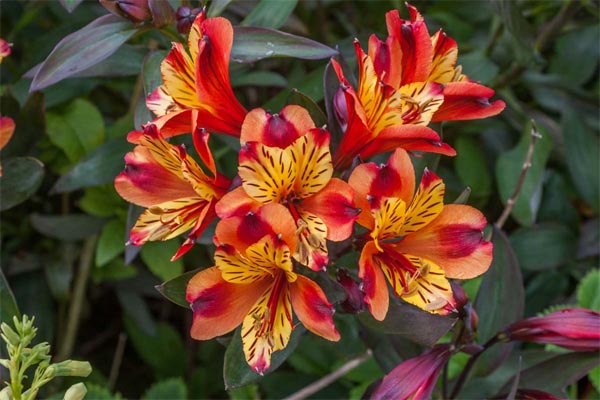
Also Read This : Fleeting Beauty: The World’s Most Short-Lived Flowers
Chrysanthemum (Chrysanthemum morifolium)
Chrysanthemums are famous for their vibrant and diverse colour range. They can change colours throughout their blooming period. You might notice a chrysanthemum’s petals shift from one hue to another as it matures, adding depth and intrigue to your garden.
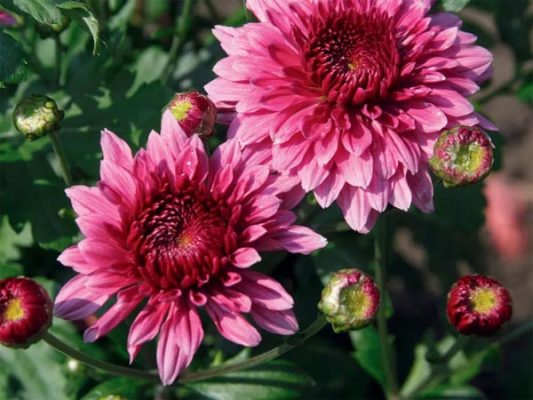
Also Read This : Blossoming Diwali: Home Decoration Ideas with Flowers
Rose (Rosa spp.)
While most roses have a fixed colour, there are a few varieties known as “colour-changing roses” that can display different colours on the same bush. This unique characteristic creates a captivating and ever-evolving display.
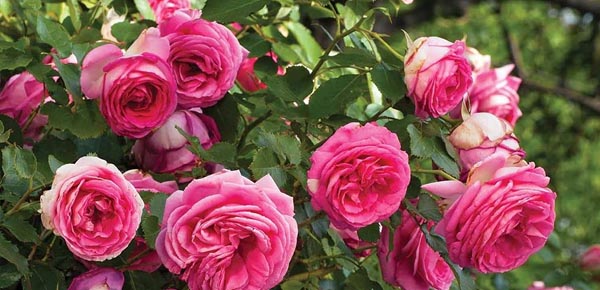
Also Read This : Upcycling Magic: Transforming Plastic Bottles into Stunning Plant Pots for Home Decor
Dahlia (Dahlia spp.)
Dahlias come in various colours and shapes, but some exhibit a delightful surprise. As they open up and mature, the petals can subtly shift from one colour to another, making each bloom a work of art.
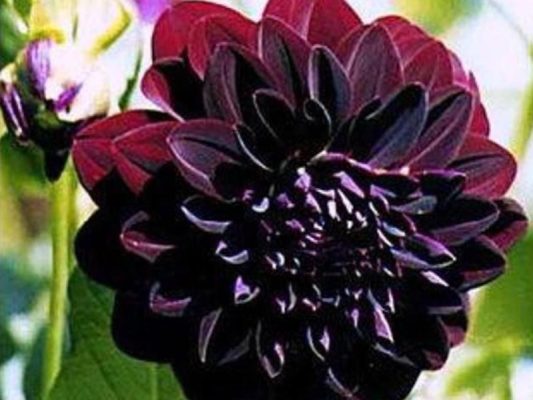
Also Read This : What are the plants that grow in water and are eaten as food?
Viola ‘Etain’ (Viola cornuta ‘Etain’)
This charming viola variety starts as soft cream flowers with lavender edges but gradually matures into an exquisite blend of soft pastel shades, creating an enchanting contrast between the young and mature blossoms.

Also Read This : Guidelines for Successfully Transplanting a Rose Bush
Hibiscus ‘Mood Ring’ (Hibiscus rosa-sinensis ‘Mood Ring’)
The aptly named ‘Mood Ring’ hibiscus is a true marvel. Its flowers change colour throughout the day, with blooms opening in the morning as deep pink and transitioning to pale pink or white by evening.
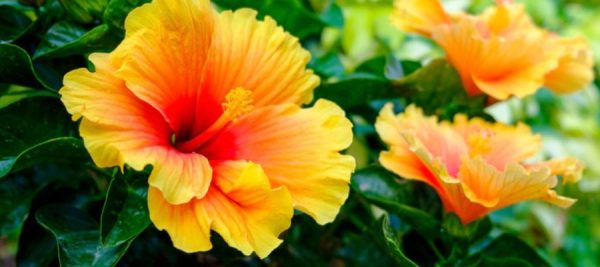
Also Read This : Blossoming Beauty: Must-Visit Flower Valleys in India
Dianthus ‘Rainbow Loveliness’ (Dianthus barbatus ‘Rainbow Loveliness’)
The ‘Rainbow Loveliness’ dianthus variety is a visual feast. The flowers exhibit a captivating array of colours, transitioning from purple to pink, often with striking bicolour patterns.
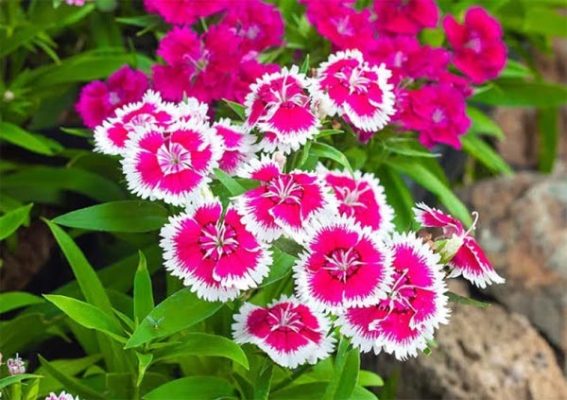
Also Read This : Elevate Your Decor: The Best Tall Houseplants with Stunning Patterns
Nature’s ability to create such dynamic and colourful flower displays is remarkable. Whether they change daily like the morning glory, shift based on soil pH like hydrangeas, or offer multi-coloured petals, these blooms add a touch of magic to our gardens and natural surroundings.
Next time you come across these enchanting flowers, take a moment to appreciate the beautiful and subtle transformations that nature has woven into their existence. These flowers remind us that even in the smallest of things, nature can surprise and inspire us. Embrace the wonder of these colour-changing blooms, and let them serve as a testament to the ever-shifting beauty of the world around us.
Frequently Asked Questions: Discover Flowers That Transform Their Hues
What causes flowers to change colour naturally?
Flowers change colour naturally due to various factors. Some flowers change colour with age, while others are influenced by environmental conditions such as soil pH. In some cases, it’s a genetic characteristic of the flower.
Do all species of a particular flower change colour?
Not necessarily. For example, while colour-changing roses exist, not all rose varieties exhibit this trait. It varies among species and even within cultivars.
How can I encourage my hydrangea to change colour?
To change the colour of hydrangea blooms, you can alter the soil’s pH. Acidic soil (lower pH) produces blue flowers, while alkaline soil (higher pH) results in pink ones. You can adjust the pH using soil amendments.
Do colour-changing flowers require special care?
In general, colour-changing flowers do not require significantly different care than their non-changing counterparts. They thrive under standard growing conditions, but it’s essential to know the specific requirements of each flower type.
Can I find colour-changing flowers in different climates?
Yes, colour-changing flowers exist in various climates, but specific varieties may be more suitable for particular regions. It’s important to choose flowers that thrive in your climate to ensure they display their colour-changing characteristics.
Are there any flowers that change colour in response to light or temperature?
While there are flowers that close at night or in response to changes in temperature (such as tulips and morning glories), these behaviours are not the same as colour transformation. Most flowers change colour due to pH, age, or genetic traits.
Can I grow these flowers in my garden?
Many colour-changing flowers are suitable for home gardens and landscapes. Be sure to research the specific requirements of each flower type and choose those well-suited to your local climate and conditions.
Are colour-changing flowers genetically modified?
Some colour-changing flowers result from selective breeding and hybridization rather than genetic modification. They have been developed over time through traditional breeding methods to exhibit their unique characteristics.
Can I use colour-changing flowers for floral arrangements?
Yes, colour-changing flowers can add an exciting dimension to floral arrangements. They can provide a captivating element of surprise and intrigue, making them an excellent choice for bouquets and centrepieces.
Are there any colour-changing flowers that are toxic to pets or humans?
It’s essential to be aware of the toxicity of certain flowers when choosing them for your garden or indoor arrangements. Some colour-changing flowers, like hydrangeas, can be toxic if ingested. Always exercise caution and research the safety of the flowers you plan to grow or display.




